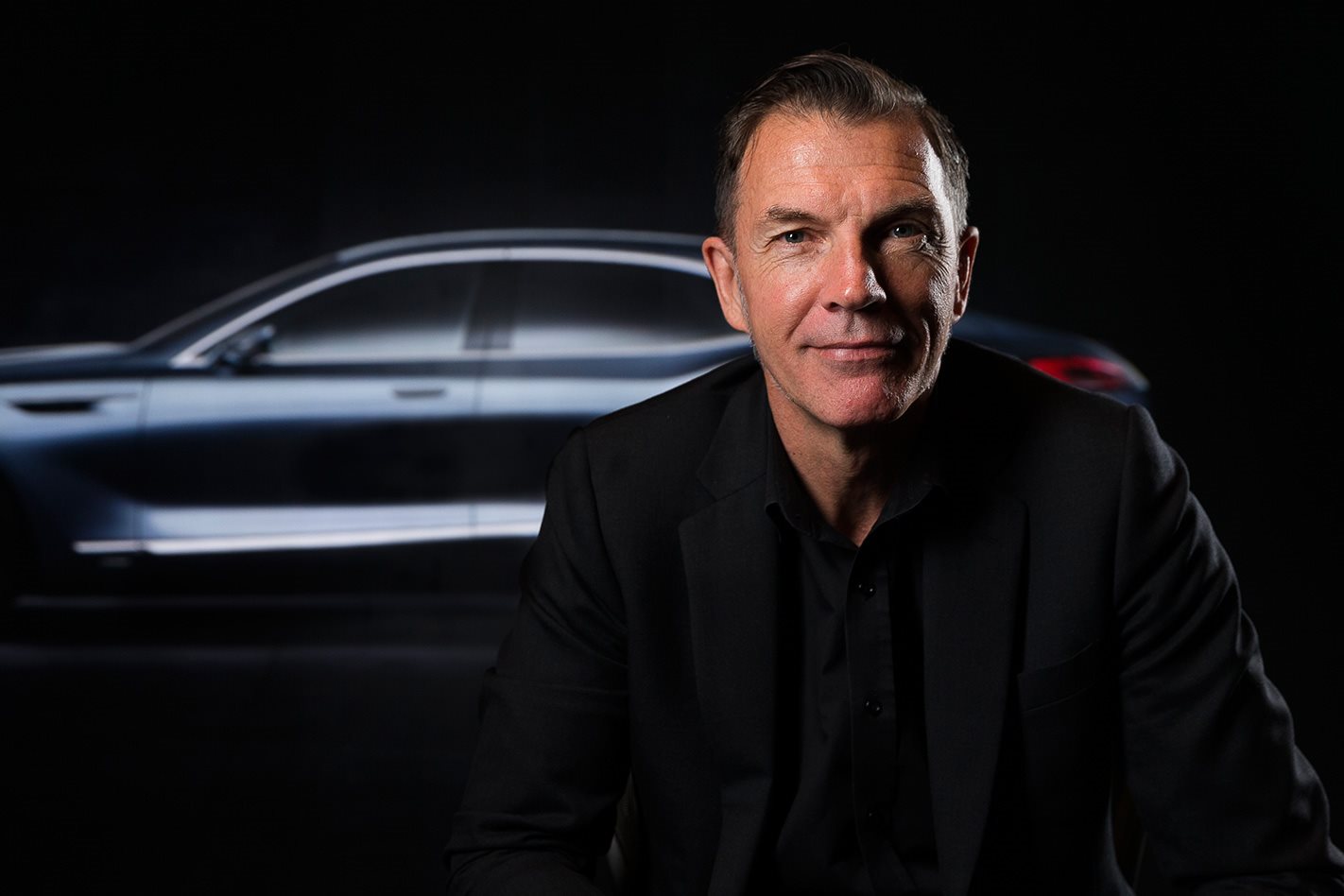Mike Simcoe once pinned Holden Monaro posters to his bedroom wall. Now, as the new head of GM Design, he leads the global team penning GM’s poster cars of the future.
First published in the June 2016 issue of Wheels magazine, Australia’s most experienced and most trusted car magazine since 1953.
It’s the late 1990s and we’re in Detroit at the Renaissance Center, those incongruous silver tubes that house General Motors world headquarters. And it’s late.
Dinner for the media has been a long and liquid affair hosted by Holden’s brilliant, fearless and sometimes terrifying sales and marketing boss, Ross McKenzie.
Always forthright, sometimes brutal, McKenzie is euphoric tonight because Holden has topped Toyota in the sales race, riding high on the back of the mighty VT Commodore. He’s a big bear of a bloke, with a pornstache and beer drinker’s gut. By now he’s had more than just a few beers… and reds, too. Basically, he’s pissed.
We’re in a bar somewhere in the Ren Cen and Rosco – he was always Rosco, although maybe not to his face – is draped over a tall, thin, decidedly sober bloke dressed in black. It’s Mike Simcoe, Holden’s design chief. The man who led the VT design team.
“I love you, Mike,” repeats Rosco, slumped against Simcoe with one arm around him and another holding a drink. Simcoe sort of shuffles, smiles in his crooked, signature way. Clearly, he would like to be just about anywhere but here right now.
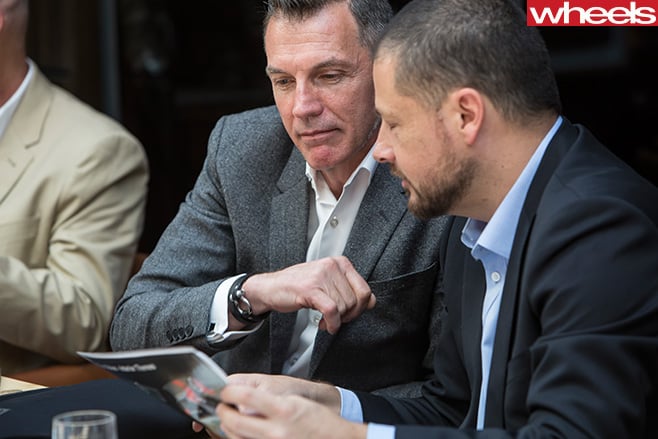
Simcoe is caught in the spotlight. Gently, he disentangles himself from McKenzie, offers another lopsided grin and says in his deep, serious voice, “I love you too, Ross”.
McKenzie seems satisfied and turns his attention elsewhere. Simcoe drifts the other way. Clearly he is relieved to no longer be the centre of attention.
***
NEARLY 20 years on and Simcoe remembers that moment vividly. “Uncle Mike,” he laughs at himself. There’s a lot of truth in that. Simcoe has always been the adult in the room, eschewing the trite, always seeking serious discussion, pondering the significance.
In a superficial world where the five-second grab rules, Simcoe offers in-depth analysis, interlacing it with the occasional dry-as-a-Khamsin joke (the wind, not the car, but he’d get both references), much of it self-deprecating.
And now the Melbourne lad who was discouraged by his RMIT lecturers from going into automotive design, who joined Holden in 1983 as an interior designer only with the intention of stocking up his bank account before heading back to conquer the UK, is taking on the biggest job in global automotive design. In fact, it’s the original job in global automotive design, overseeing the disparate brands of General Motors – Chevrolet, Cadillac (where his former Holden protege Andrew Smith is design boss), Buick, GMC, Opel, various co-ventures and, of course, Holden.
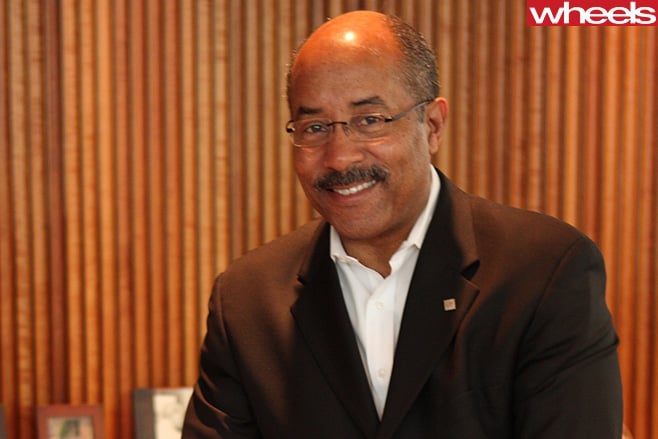
This isn’t just a big deal, this is the biggest deal. In terms of Aussie success in the global automotive industry, only Jac Nasser’s appointment to run Ford could be rated higher.
Simcoe looks uncomfortable as I reel all these headline stats past him. He is back in the spotlight and he knows it. But the spotlight is worth this job.
“There are some pretty amazing ghosts in that corner office, and in some ways this is regarded as the best job in the world if you are a designer,” Simcoe says. “So that is daunting.
“Do I see myself as a match for Earl or Bill Mitchell (Earl’s successor) or some of the ghosts past? I see myself as quite a different character to some of those and it’s for a different time. If I think too much about that – the scale of the job, the scale of the organisation, the impact – then this becomes a hugely daunting role.
“Like in all things, or the way I do things, I will break this down to the chunks I can handle. I’m old enough now to know I can’t do everything all at once and I will deal with the things I think are primary.”
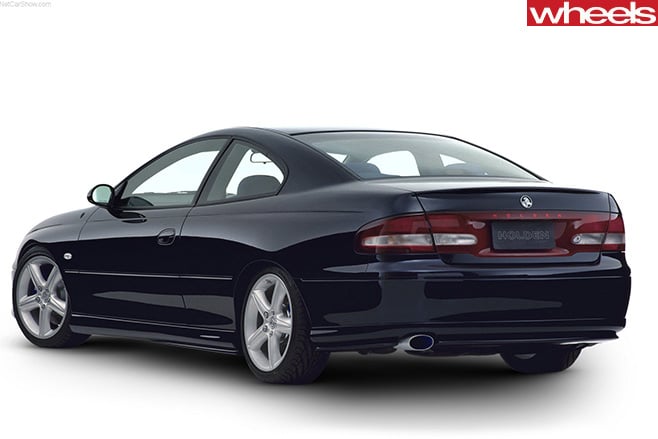
He’s as lean as ever, still dresses in black, and that angular face, which at times has been styled with rocker sideburns, a waxed moustache and even a hipster beard, has aged well.
***
WE’RE sitting in Simcoe’s Port Melbourne office, overlooking Salmon Street and the low-rise industrial landscape that leads towards the city high-rise. There are open cardboard cartons being loaded with stuff headed for his new digs at GM’s massive design centre in Warren, Detroit’s largest suburb. But still sitting out on display are models of cars that are among the great achievements of his 33-year career – the Commodore Coupe that morphed into the reborn Monaro, the Holden VE Commodore, the fifth-generation Camaro.
But he was a car lover before he was a car designer and that love is still there. His current daily driver is a Commodore SS-V Redline. In his garage are a Lancia Aurelia (featured in Wheels last year), a 1961 Aston Martin DB4 and an original Elfin Streamliner (a revival was designed under his influence in the early 2000s). Even before getting to Detroit, he’s on the hunt for a split-window 1963 Corvette.
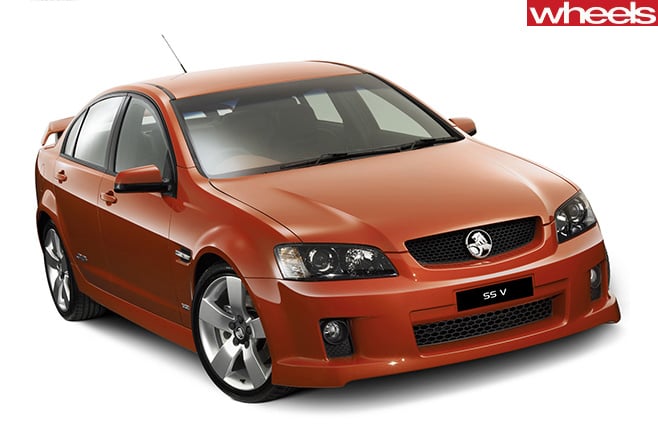
“If we’re doing a vehicle that might be a first-time purchase for someone in a country where transport is developing, you want that experience to be as visceral and emotional for those people as for someone in a developed market making the choice of buying a Corvette,” he insists. “Whether it’s a Spark or some unknown product that is someone’s first purchase moving from a moped or something like that to a first family vehicle, it’s powerful stuff.”
Dig into more detail and Simcoe manoeuvres carefully around the subject of his new job, like a tugboat captain circling the ocean liner he will soon be leading. He doesn’t want to sound shallow, he doesn’t want to sound disrespectful to his predecessor, and he doesn’t want to sound overconfident. Yet at the same time he doesn’t want anyone thinking he isn’t looking forward to the challenges and doesn’t have ideas about how he will make the job his own.
“They wouldn’t have asked me to do the job if they didn’t think I could do it.

“I will try very, very hard,” he offers, then stops. “No, that’s being trite. I trust the people who asked me to do the job, that they judged I have what’s needed, and I just need to do it well. I see my job as enabling a team of great people around the world and not getting in their road – make life continue to work for them because their design at the moment is pretty good.”
‘Team’ is a key word that keeps resonating throughout Simcoe’s career. He has deflected constantly to the people who have worked with and for him. It’s almost painful at times, but the tune never changes. In 45 minutes he says ‘team’ to me 10 times. It will undoubtedly be a constant in his time at Warren.
“I always consider myself as part of a total team. You have heard me a number of times drive credit back to the guys and girls who as I see it actually do the work. The women and men inside GM studios, whether they are designers, whether they are creating surface, whether they are modelling, they are the people who ultimately enabled me into this positon.”
***
THE best independent assessment of why Simcoe was selected to lead this team comes from Bob Lutz – Detroit royalty.
Now 84, Lutz was the veteran ‘product guy’ who after 30 years was recalled by then president Rick Wagoner for a second stint at GM in 2001 with the task of reinvigorating a stale vehicle range. ‘Maximum’ Bob toured the world, drove the various offerings under his charge and came Down Under to learn about Holden, a place he later described as a “microcosm of what we would like GM to be”.
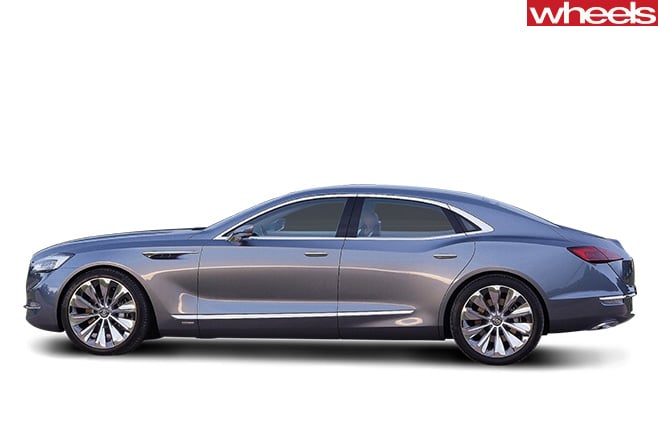
Simcoe stayed in the US in several roles for six years and with Lutz worked on cars such as the Zeta-based Camaro and the Pontiac G8, a rebadged left-hook VE Commodore that later became the Chevy SS after Pontiac was killed off.
Even a decade ago Lutz was telling people Simcoe should one day be the global boss of GM design.
“He knows the intricacies of load paths and body engineering,” Lutz told industry magazine Automotive News after his forecast turned to fact in April. “You could take him out of styling and put him in charge of body engineering and it would probably work out just as well.
“Engineers look at a clay model and say: ‘That’s not going to work. You can’t have the windshield touch-down point that far forward. It’s going to be too hard to meet crash standards, and we’ll need two or three more inches of overhang. You can’t do this and you can’t do that.’
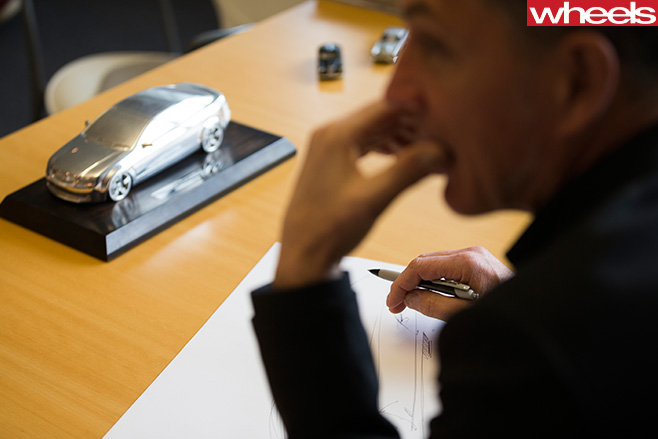
Simcoe is quite clear that he acquired this broad and deep knowledge in his time at Holden, where the process of car construction was taken from idea to dealership by a small group of designers, engineers and product planners who knew each other on a first-name basis.
THE 1990s into the mid-2000s were halcyon days for this group at Holden. Simcoe led design, the laconic, talented Tony Hyde led engineering, and German firebrand Peter Hanenberger drove the show as MD, determined to take Holden higher and farther than ever before, while sticking a metaphorical middle finger up at the Detroit bosses with whom he shared a mutual dislike.
The result was a profusion of models based off V-car Commodore architecture; sedan, wagon, coupe, ute, long-wheelbase sedan, all-wheel-drive wagon, crew cab and so on. Then it was the billion-dollar baby, the VE Commodore, with capability baked in to take on the world.
“I spent a lot of time in the early days with sculptors and modellers because realistically I didn’t know anything about surface,” Simcoe admits. “So engineers taught me about engineering and the modellers taught me about surface.”
And who taught him about proportion, the design mantra he has championed throughout his career? “That’s internalised. I had to bring something to the party.” Crooked grin.
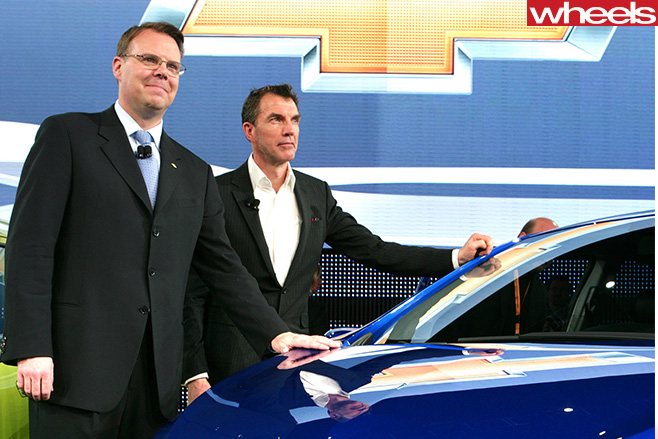
“The worst thing in the world is getting ahead of yourself because you fall down fairly quickly. I have never blown my own trumpet too much.”
Maybe not, but he will be playing his own tune. Lutz says Simcoe will be more confrontational than the mild-mannered Welburn, who began his career as GM’s first African-American designer and finished it with 13 years in the top job.
Simcoe has read Lutz’s assessment of him. “Lutz described me as a grumpy old bastard, I think,” he says, half laughing and half grimacing. But he doesn’t deny Lutz’s basic proposition.
“I am confrontational and I have an ability to upset people if they take me at face value. But I know how to put a car together, I know how the network works and in some ways I am able to sit down and have a logical argument with engineers and others who sometimes we are at odds with. It’s played off as confrontational, or black and white, but it’s not. My job is to be confrontational when I need to be, but also again make sure that I make the relationships as a whole work.
“The size of this role means I have some hugely talented creative people that we bring to bear on a program, so the level of creativity and skill involved is just unquestionable. I then perhaps have an ability to make sure that is focussed in the right way, and the compromises around that creativity – if there are any – are all good ones.

***
AND what of this place he leaves behind? Simcoe returned to Australia in 2012 after six years in Warren with wife Margaret and daughters Kathryn and Eleanor to resume life in his beloved leafy Melbourne east. His job was to run the Port Melbourne and Korean studios and be the official Holden champion within GM.
But the Australian automotive industry has since dissolved before his eyes. Ford ceases manufacturing this year, Holden and Toyota in 2017. GM will retain small elements of its footprint including the design studio and the Lang Lang testing ground. But by the end of next year the locally designed, developed, engineered and manufactured Commodore in which he and so many others invested so much passion and intellect will be dead.
Is it a relief that he won’t be in Melbourne at the death? I know him well enough to suspect the real answer is yes, but he won’t – can’t – say such a thing. Instead, he generalises.
“I hate the idea that in this country we won’t be manufacturing vehicles. I think that is incredibly short-sighted of everyone involved. I worry about the country as a whole, that we we have lost manufacturing. Not just automotive manufacturing, but we’ve lost manufacturing in a large way. The opportunity for engineers and designers and everybody else is diminished as a result and the country is not as rich because of it.”
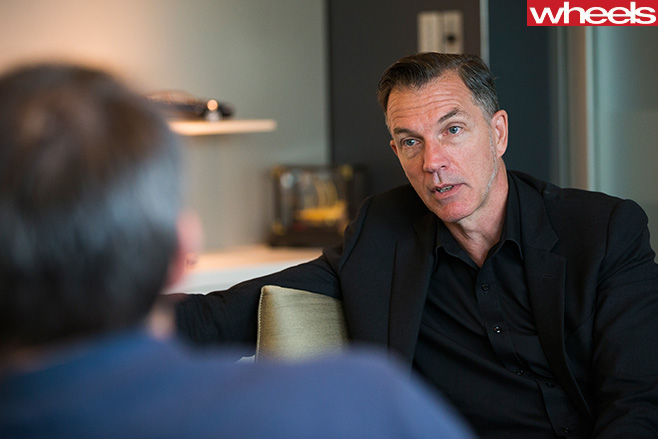
“A decision was made, there is no turning back now, so what do we do to compensate? We have in the design operation here people who are influencing products that ultimately come back into the marketplace. And to me that’s a great thing.”
Our silver lining as Simcoe departs and Holden reshapes is that the bloke in the biggest and most prestigious job in global design promises he won’t forget us.
“By the nature of me having grown up at Holden, I can’t ever forget what I came from, so I will always be interested and considerate of Holden.”
But the final word goes to Ross McKenzie, now retired to a less tumultuous – shall we say more sober – country life, but still as admiring as ever of Simcoe’s abilities and character.
“Michael Simcoe is the best designer I ever met, by a country mile,” Rosco says emphatically.
“He had great vision of what might be possible, well beyond practical constraints. Michael’s design work made my sales and marketing life so much easier.
“The VT Commodore was a perfect example; a great car for its time and allowed us to drive all-time sales records over many years.
“Thanks, Michael. Love your work.”

